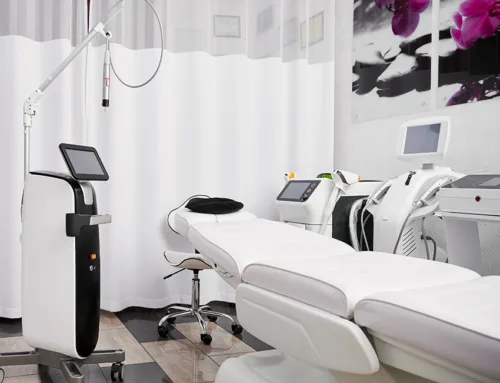Top Marketing Strategies for Healthcare Organizations in 2025
In today’s competitive healthcare landscape, effective marketing is essential for reaching new patients and building trust within communities. With continued advancements and challenges in the industry, healthcare organizations must adopt innovative and patient-focused strategies to stay ahead. From leveraging digital tools like SEO and social media to embracing traditional methods such as print advertising and local outreach, a well-rounded approach can significantly enhance patient acquisition and retention. This guide outlines the top marketing strategies to help healthcare organizations thrive in 2025 by fostering meaningful connections and strengthening their brand presence.
Key Takeaways
- A healthcare organization should adopt multichannel marketing strategies that blend digital and traditional methods to effectively engage patients and build lasting brand loyalty.
- Establishing a strong online presence through user-friendly websites, optimized search engine visibility, and active social media interaction is vital for attracting and retaining patients.
- Healthcare marketing must adhere to compliance regulations, including HIPAA, and prioritize patient feedback to enhance trust and ensure effective communication.
Understanding Healthcare Marketing
Healthcare marketing involves deliberate strategies designed to attract and engage patients while fostering long-term loyalty to health systems. By adopting inclusive strategies that utilize both digital and traditional marketing channels, these systems can ensure effective communication and patient connection. The rise of digital platforms has transformed how patients access medical information, making it essential for marketers to adapt their strategies to stay relevant.
Crafting a multichannel marketing plan is critical for healthcare organizations to resonate with their target audience. Understanding these principles empowers marketers to address industry-specific challenges and create impactful campaigns.
Definition of Healthcare Marketing
Healthcare marketing focuses on maintaining consistent communication with patients and enhancing the recognition of healthcare brands. Modern patients seek innovative, convenient, and digitally accessible care. Building a strong brand involves articulating an organization’s values, mission, and unique identity through strategic messaging and outreach.
To establish meaningful connections with patients, healthcare organizations utilize market research, data analytics, and a blend of modern digital platforms and traditional methods. An effective marketing strategy in the healthcare sector relies on understanding patient preferences, behaviors, and needs, which enables the creation of personalized marketing campaigns specifically designed for them.
Importance of Healthcare Marketing
An effective healthcare marketing strategy enables healthcare organizations to expand their reach and efficiently attract new patients. By implementing robust strategies, these organizations can enhance patient acquisition, helping them thrive by better serving both existing and prospective patients.
The healthcare industry has shifted toward consumer-centric models emphasizing engagement and personalized care. Meeting demands for convenience and tailored services is critical. Consistent branding across platforms strengthens patient loyalty, while promoting quality achievements builds trust, and enhances reputation.
Adaptable marketing strategies ensure healthcare organizations remain relevant amidst constant industry changes, preserving their competitive edge.
Building a Strong Online Presence
Healthcare marketing involves a combination of digital and traditional approaches for healthcare organizations to effectively engage with patients. The goal is to foster patient engagement by employing strategic healthcare marketing tactics.
Essential techniques include creating accessible websites, optimizing content for search engine visibility, and utilizing various social media platforms as part of the broader marketing strategy.
Developing a User-Friendly Healthcare Website
A mobile-friendly website is essential, as more patients access health information through smartphones and tablets. Responsive websites adapt to various screen sizes, ensuring a seamless user experience across devices. Interactive elements can further enhance engagement and improve the overall patient experience.
A user-friendly website allows patients to quickly access relevant information. Including patient testimonials, success stories, and visually appealing graphics can help establish credibility and trust.
Healthcare websites should also provide valuable content that addresses common patient concerns, ensuring that patients can easily find answers and resources from their healthcare provider.
Search Engine Optimization (SEO) for Healthcare Providers
SEO plays a crucial role in attracting patients to healthcare providers by increasing their visibility in search engine results. By using relevant keywords and phrases, and ensuring content is both readable and naturally integrated, healthcare organizations can improve their chances of appearing in pertinent searches.
To maintain SEO effectiveness, it’s essential to regularly update web content. A responsive website is also fundamental for achieving high search rankings, as search engines favor sites that provide a good user experience across all devices. Offering comprehensive information about treatments can significantly boost organic search traffic to a site.
Strategic backlinking is key to strengthening an online presence, enhancing credibility, and supporting patient acquisition efforts. Securing backlinks from reputable websites increases referral traffic and improves standing in search engine rankings. Local medical practices should focus on expanding their content library before prioritizing backlink strategies.
Leveraging Social Media Platforms
Healthcare marketers can greatly enhance their organization’s visibility and engagement within the community by skillfully utilizing social media. Regular updates on social media platforms keep patients engaged and foster ongoing dialogue, thereby increasing patient involvement.
By ensuring consistent branding across various social media platforms, healthcare organizations are able to present an integrated online image. The brand identity is strengthened when educational content and interactive videos are used to engage with the target audience on these platforms.
Utilizing Paid Advertising Strategies
Healthcare organizations use paid advertising to increase visibility and attract prospective patients. This method effectively targets specific demographics, improving the chances of reaching potential patients.
Pay-Per-Click (PPC) Campaigns
PPC, or pay-per-click advertising, is a model where advertisers are charged whenever their ads receive a click. These campaigns draw in quality traffic and prospective patients and frequently produce swift outcomes.
Display Ads Targeting Healthcare Consumers
Programmatic display advertising, which uses automation and real-time bidding, increases the visibility of ads, typically placed on website sidebars or headers. This advertising method offers precise targeting and improved engagement.
By delivering tailored information about healthcare services, display ads effectively engage prospective patients. The enhanced reach of these ads helps attract a larger pool of potential patients.
Enhancing Patient Experience and Engagement
Effective healthcare marketing focuses on the individual needs and preferences of patients. By enhancing engagement and the overall patient experience, healthcare providers can build lasting relationships and foster patient loyalty.
Key strategies for success include integrating personalization into healthcare marketing efforts and actively collecting and responding to patient feedback. These approaches are essential in creating a patient-centered marketing strategy that resonates and retains.
Personalization in Healthcare Marketing
Personalized communication uses patient data to tailor messages and improve engagement. Marketers can leverage clinical data from EHR systems and consumer behavior data from CRM software to personalize outreach. Marketing automation software further enables data-driven campaigns, creating unique customer journeys based on real-time data.
Personalized marketing boosts patient loyalty and encourages repeat visits. Personalized direct mail campaigns, for instance, tend to have higher response rates.
Healthcare CRMs integrate patient data to personalize outreach across multiple channels, enhancing customer service.
Collecting and Responding to Patient Feedback
Patient feedback is essential for shaping healthcare marketing strategies and impacting patient choices. Many patients view online reviews as crucial when selecting a healthcare provider. Actively encouraging online reviews and various other feedback channels is crucial for capturing patient perspectives.
Proper patient feedback management can greatly enhance a healthcare organization’s reputation and visibility. Responding to reviews compliantly and empathetically is crucial for preserving a positive reputation. Additionally, implementing automation in the feedback collection process can streamline operations and boost response rates, ensuring timely and effective gathering of patient insights.
Content Marketing for Healthcare Organizations
Effective content marketing is crucial for healthcare organizations aiming to inform and engage their patients. Strategies such as creating informative blog posts, educational videos, targeted emails, and sponsored content can significantly enhance patient outreach.
These approaches enable healthcare providers to meet the informational needs of patients, caregivers, and healthcare professionals effectively.
Creating Educational Blog Posts
Creating content that is both relevant and engaging is crucial for successful social media marketing. Designing blog posts that connect with the audience is key to boosting patient engagement. Metrics like page stay duration can help tailor content more effectively for healthcare marketing purposes.
Content that emphasizes the connection between mental and physical health is particularly valuable for providers who advocate holistic treatment approaches.
Video Marketing in Healthcare
Video marketing is a powerful tool in healthcare for simplifying complex medical topics, making them more understandable and accessible. By presenting medical information in a clear and engaging manner, video content can significantly enhance patient trust.
The significance of video content in healthcare marketing is increasing due to its ability to effectively communicate information and engage patients. Employing video marketing techniques simplifies complex medical subjects, enhances patient understanding, and builds trust.
Integrating Traditional Marketing Methods
Traditional marketing techniques remain relevant in the digital era, emphasizing a balanced approach. Print advertising and community events remain effective for healthcare organizations amid a digital landscape.
Combining traditional and digital marketing strategies maximizes outreach and patient engagement.
Print Advertising and Direct Mail Campaigns
Healthcare brands can establish authority by engaging with media, sharing updates, and participating in forums. Call tracking software helps healthcare providers gather data from offline marketing efforts, like direct mail.
Qualified healthcare media buyers are crucial for traditional advertising to reach the right demographics. Print advertising and direct mail campaigns enhance visibility and reach a broader audience.
Community Events and Sponsorships
Engaging in community events strengthens trust and improves the perception of a brand among local residents. Establishing a presence at these local gatherings solidifies one’s standing within the community.
Participating in community activities boosts visibility within the locality and forges robust connections.
Analytics and Performance Tracking
Measuring marketing performance is essential for healthcare organizations to validate their strategies and optimize future efforts. Accurate performance tracking not only enhances marketing effectiveness but also contributes to improved patient care and organizational performance.
Key Performance Indicators (KPIs) for Healthcare Marketing
In healthcare marketing, key performance indicators (KPIs) include metrics such as click-through rates, conversion rates, and new patient acquisitions. Essential KPIs for tracking include email campaign open rates, ad click-through ratios, and total conversion statistics. These metrics help evaluate the success of marketing efforts and inform adjustments to improve results.
Monitoring conversions for actions such as appointment registrations, prescription orders, and treatment adherence is crucial. Analytics tools from social media platforms (e.g., Facebook, LinkedIn) and third-party resources (e.g., Sprout Social, Hootsuite) provide valuable insights into performance. Keeping track of these KPIs ensures that strategies effectively drive patient engagement and acquisition.
Additionally, assessing competitors’ marketing tactics—both direct and indirect—can reveal opportunities for improvement and growth. Setting SMART objectives, such as increasing patient acquisitions by a specific percentage in the coming year, helps create a focused approach to achieving success in healthcare marketing.
Ensuring Compliance with Regulations
Regulations in healthcare marketing consist of lawful directives and benchmarks set for promotional activities. These guidelines are put into place by both federal and state authorities, as well as professional organizations, to maintain the integrity of healthcare practices and regulations. It is essential that compliance is observed to safeguard both patients and healthcare providers while fostering innovation within the confines of legality.
Primary focal points involve adherence to HIPAA requirements alongside legal aspects pertinent to advertising within the healthcare sector.
HIPAA Compliance in Marketing
In the realm of healthcare marketing, it is imperative to engage with clients empathetically while strictly adhering to HIPAA regulations. Before utilizing patient data for promotional activities, healthcare providers are required to secure informed consent. The forms used to gather this information must uphold stringent security measures in accordance with HIPAA mandates, thus safeguarding against any potential breaches of data privacy. Remarketing initiatives typically do not conflict with HIPAA guidelines. Nevertheless, prudence in these matters is advisable.
To adeptly handle consumer feedback within the confines of regulatory requirements, healthcare organizations can integrate automated review platforms that align with HIPAA standards. By doing so, they ensure the protection of patient confidentiality and sustain a foundation of trustworthiness within their services and communications strategies.
Legal Considerations in Healthcare Advertising
Healthcare organizations must be cautious about engaging in practices like posting or purchasing counterfeit third-party reviews as part of their advertising strategies, as these activities carry significant legal risks and could lead to consequences. It is critical for healthcare advertising to comply with a variety of legal standards to protect both providers and patients.
Developing clear protocols for adhering to advertising laws and regulations can build trust and protect healthcare entities from potential legal issues. Marketers in the healthcare sector must ensure their strategies are not only effective but also fully compliant with legal requirements.
Summary
In summary, healthcare organizations must adopt effective marketing strategies to attract and keep patients in 2025. Recognizing the significance of a robust online presence, employing paid advertising tactics, improving patient experience, embracing content marketing techniques, and incorporating conventional approaches while ensuring adherence to regulations are all pivotal for fostering trust and loyalty among patients. As developments in healthcare continue to unfold, keeping abreast of contemporary marketing trends and legal requirements remains critical for triumph in healthcare marketing.









